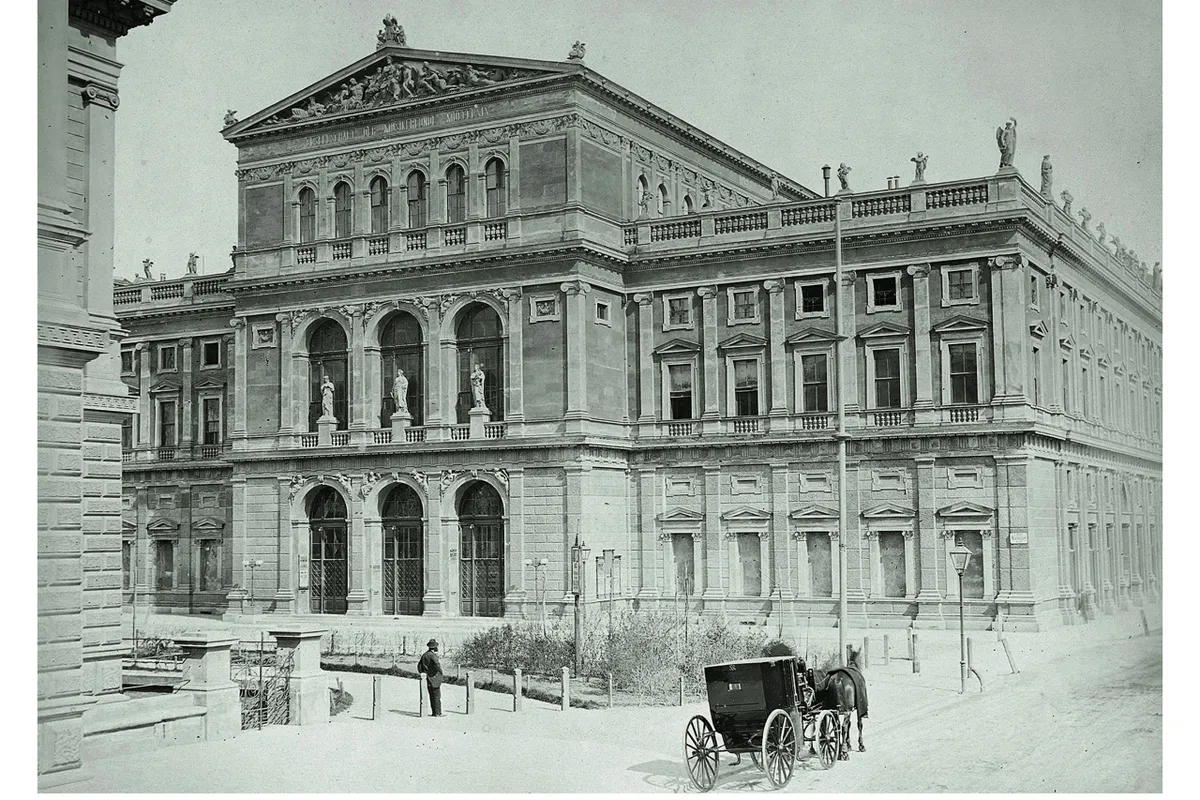On 6 January, 1870 the Musikverein opened its doors to concertgoers for the first time. The city’s largest ever concert hall, the glittering Grosser Saal (or Goldener Saal) had space for 2,000 and an acoustic that venues around the world have tried to emulate ever since. The Emperor Franz Joseph I himself marked its completion by laying the capstone, and the handsome neo-classical building instantly became a Viennese landmark.

One critic at the opening felt the hall’s architecture embodied Mozart’s great Jupiter Symphony, but it was Beethoven who was at the heart of the first programme. His Fifth Symphony and Egmont Overture were performed; the occasion also marked the centenary of Beethoven’s birth. Mozart’s music did feature, however – an aria from Die Entführung aus dem Serail, sung by one Herr Walter – along with Bach, Haydn and Schubert. This being Vienna, there was also an opening ball, at which Johann Strauss II introduced his new waltz Freuet Euch des Lebens (Enjoy Life).
Johann Herbeck conducted the inaugural concert. A name barely remembered today, he had for several years been conductor for the Gesellschaft der Musikfreunde in Wien (Society of Friends of Music in Vienna) – also known, somewhat confusingly, as the Musikverein. Founded in 1812, originally for amateurs, the society became Vienna’s most influential musical organisation, associated with major composers including Beethoven, Schubert and Mendelssohn. As well as putting on concerts, the Musikverein founded a conservatory and set up historical archives. In 1851 the society’s orchestral branch turned professional and in 1858 the Singverein was founded for exceptional amateur choral singers. As the Gesellschaft grew in stature, demands for a bigger concert hall grew.
Those demands were met from 1858 when, following an Imperial decree in 1857, Vienna’s old city walls were demolished. The elegant new Ringstrasse was built and land was freed up for a concert hall, funded by a mix of private philanthropy and state support. The Danish architect Theophil Hansen won the design competition, his Classical vision for the Musikverein drawing on his time working in Greece.
The Grosser Saal boasts 58 caryatids (female statues), modelled on those of the Erectheion on the Acropolis in Athens, and the ceiling frescoes depict Apollo and the Muses. There is a lot of gold: seemingly every statue and decoration is gilded – but it also sounds good. It’s been suggested that sound bouncing off the many irregular surfaces, combined with the hall’s classic shoebox shape, create the Musikverein’s glorious, warm acoustic.
Not long after the main hall opened, so too did the 600-seat Kleiner Musikvereinssal, renamed the Brahms-Saal in 1937 after the composer, who became director of the Gesellschaft in 1872. That November Brahms directed a concert that introduced the Musikverein’s new organ, followed five days later by the venue’s first organ recital, including improvisations by Bruckner.
Over the ensuing decades, with the Vienna Philharmonic resident at the new hall, the Musikverein witnessed countless premieres, including Brahms’s Second (1877) and Third (1883) symphonies, and Bruckner’s Third (1877), although only 25 listeners were left in the auditorium by the time Bruckner’s epic work had ended. In 1912, Mahler’s Ninth, which incidentally quotes Strauss’s Freuet Euch des Lebens, was given a posthumous premiere.
Fast forward to 31 December 1939, and waltzes and polkas by Johann Strauss II took centre stage in a New Year’s Concert conducted by Clemens Krauss, the first of what is today a much-loved annual event, watched on TV by millions. But by then war had broken out, and this was no mere display of lightness and jollity – it was, in fact, a fundraiser for the Nazis’ Winter War Relief. The Musikverein and Vienna Philharmonic had entered a dark period.